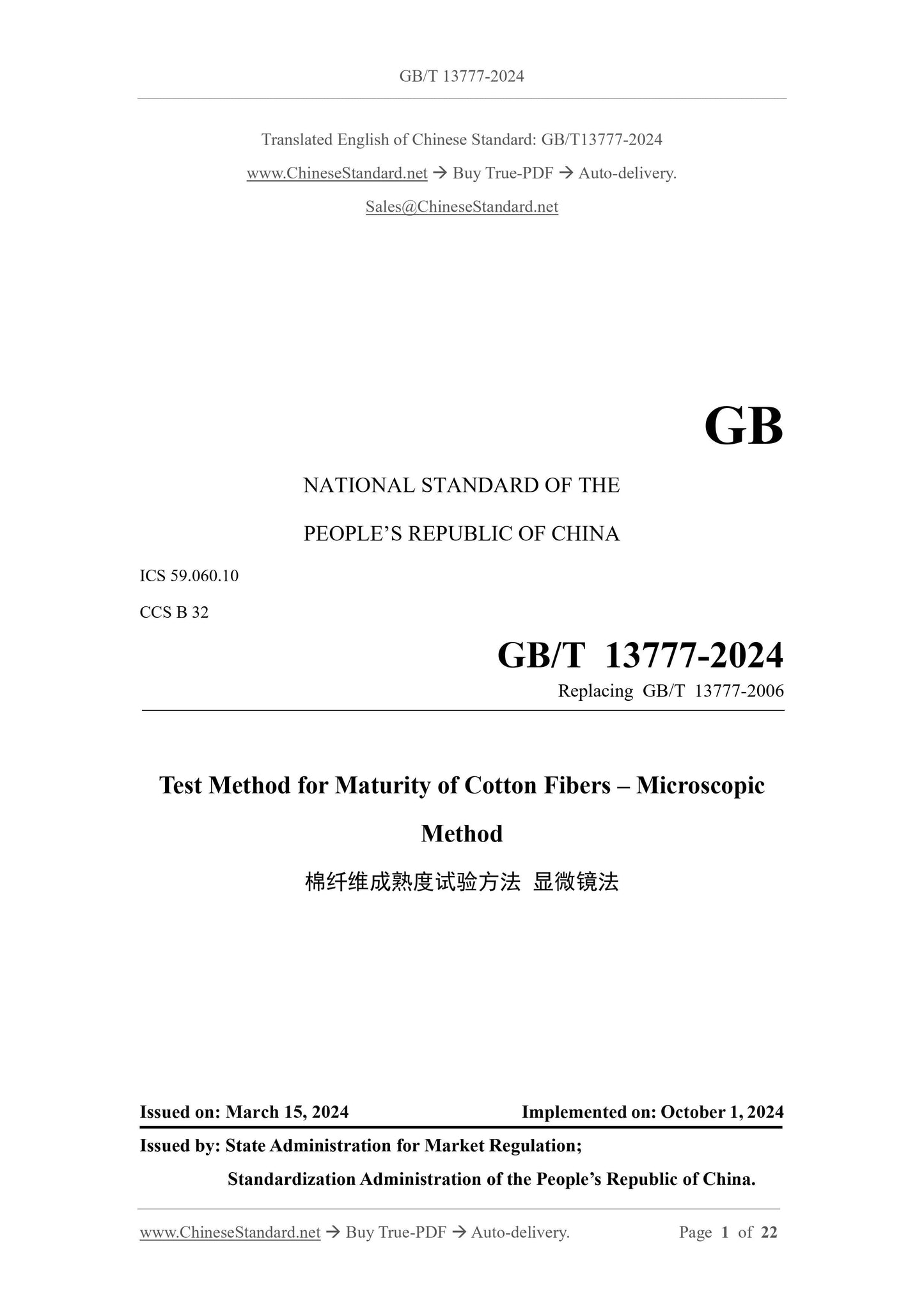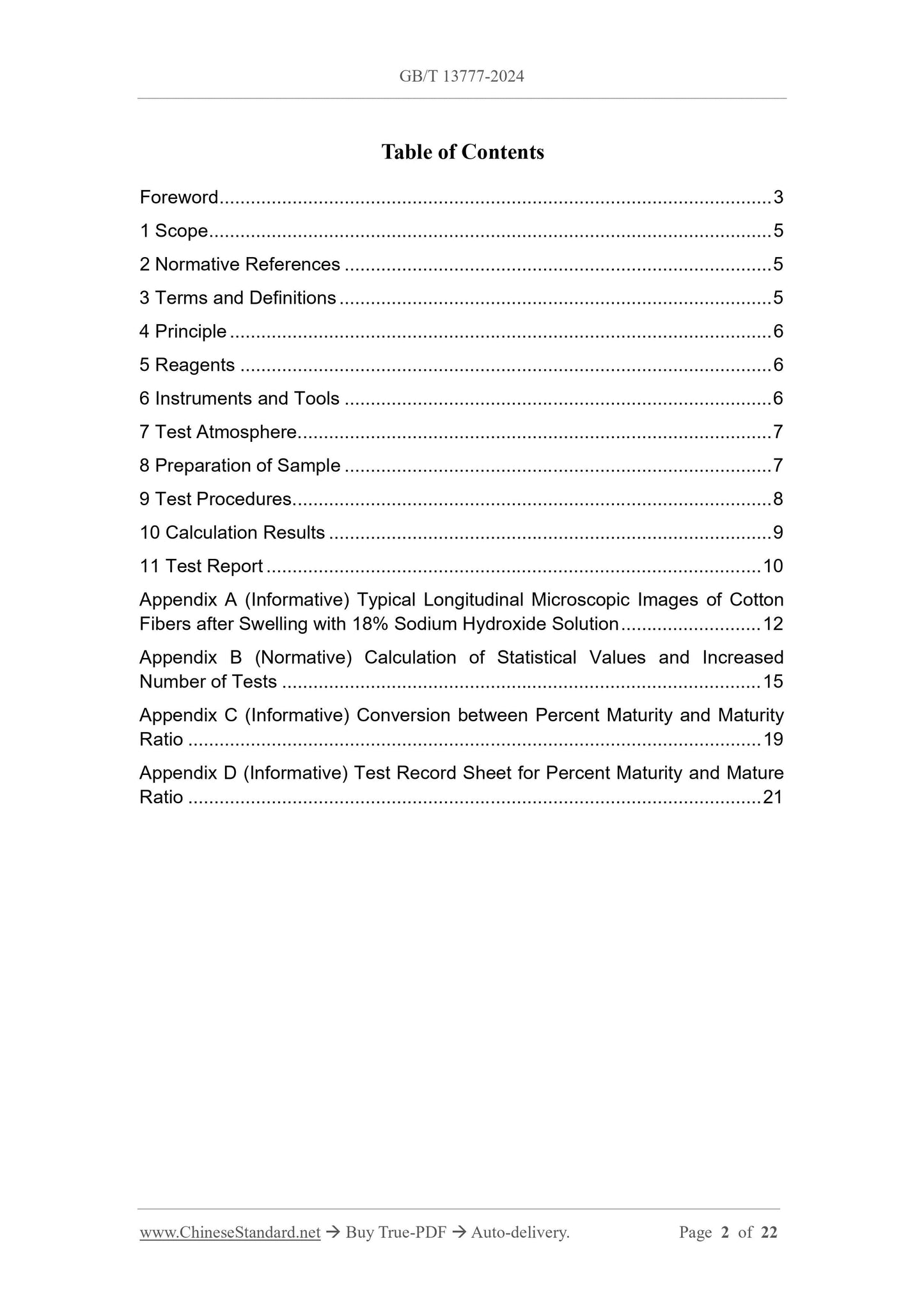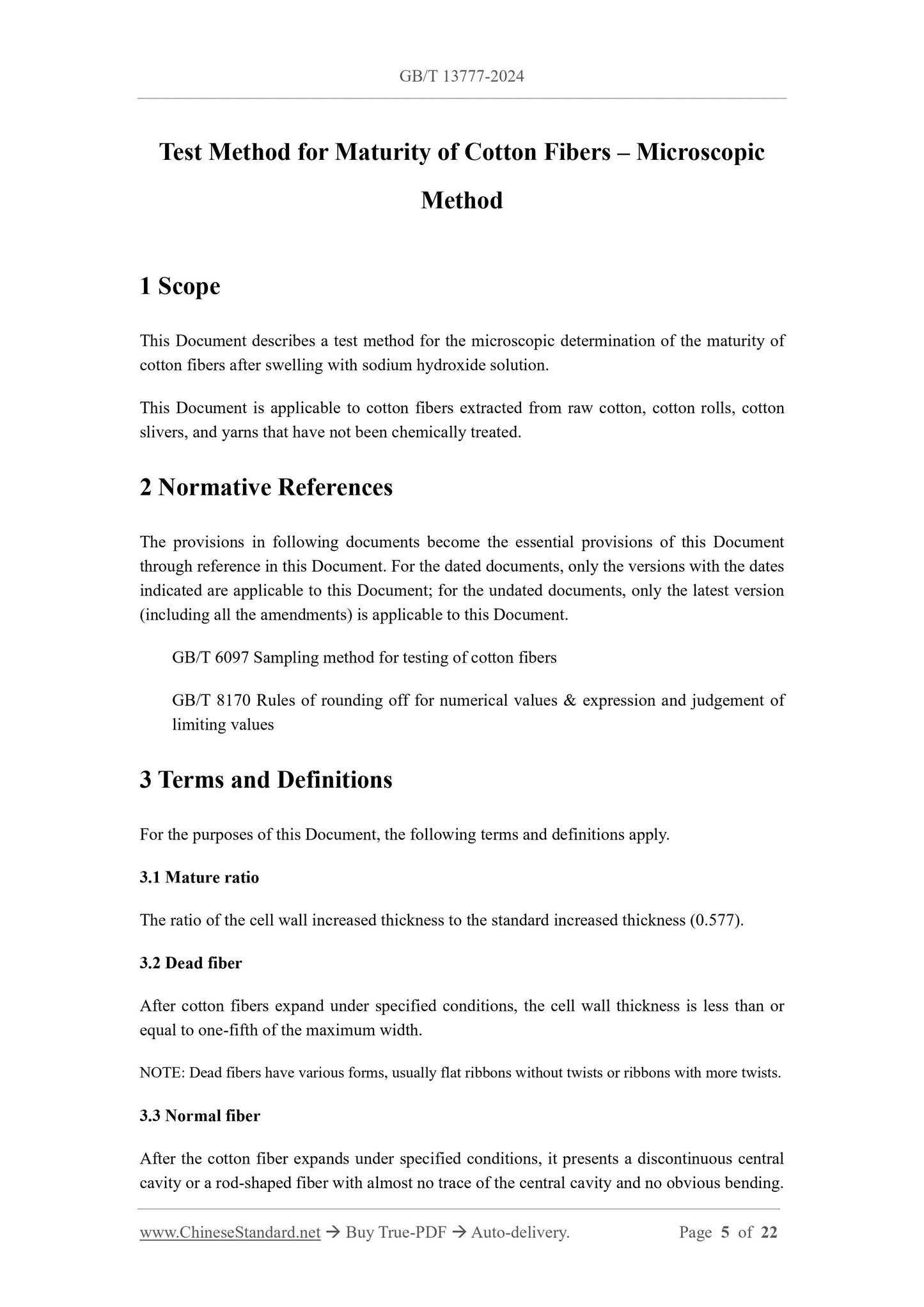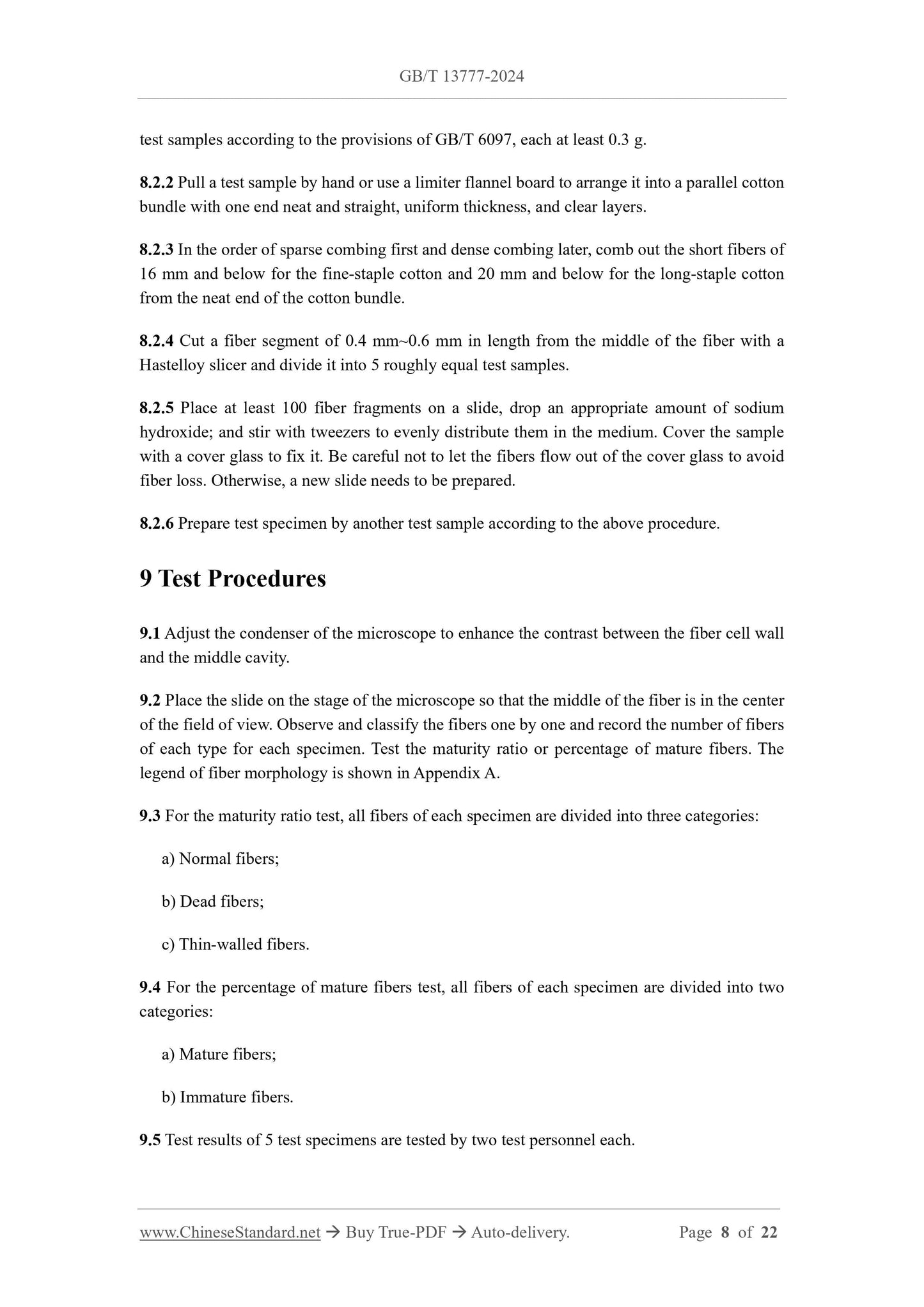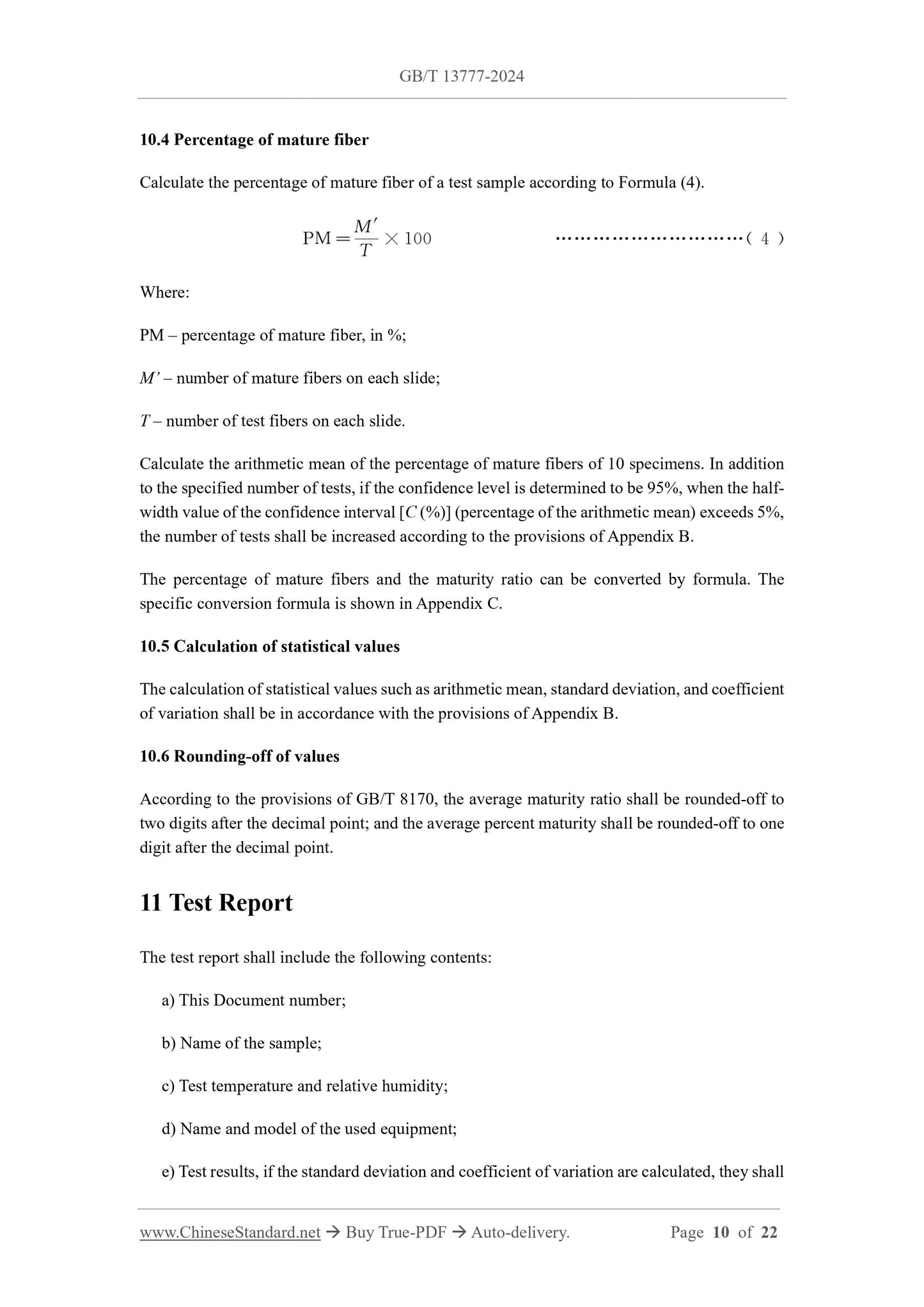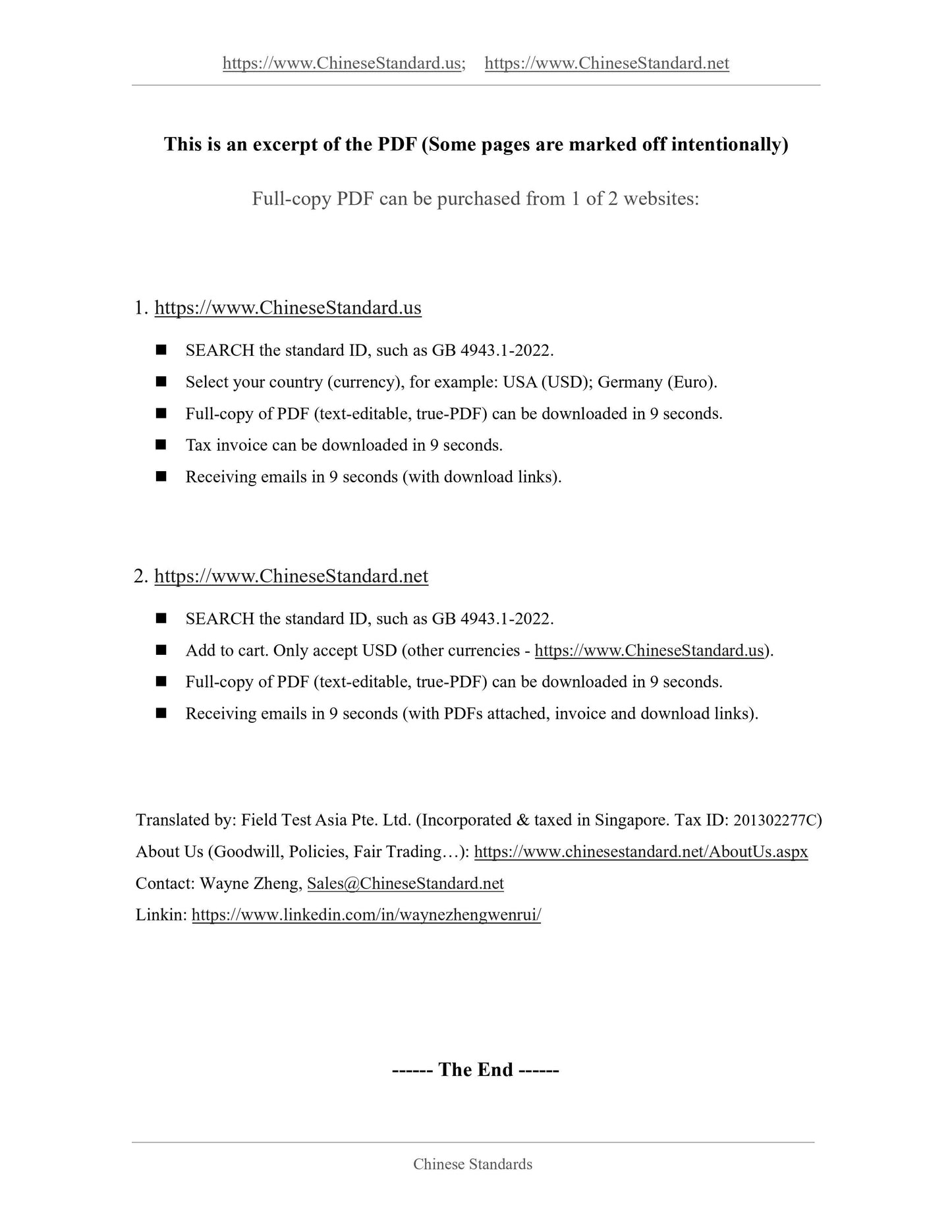1
/
of
7
www.ChineseStandard.us -- Field Test Asia Pte. Ltd.
GB/T 13777-2024 English PDF (GB/T13777-2024)
GB/T 13777-2024 English PDF (GB/T13777-2024)
Regular price
$230.00
Regular price
Sale price
$230.00
Unit price
/
per
Shipping calculated at checkout.
Couldn't load pickup availability
GB/T 13777-2024: Test method for maturity of cotton fibers - Microscopic method
Delivery: 9 seconds. Download (and Email) true-PDF + Invoice.Get Quotation: Click GB/T 13777-2024 (Self-service in 1-minute)
Newer / historical versions: GB/T 13777-2024
Preview True-PDF
Scope
This Document describes a test method for the microscopic determination of the maturity ofcotton fibers after swelling with sodium hydroxide solution.
This Document is applicable to cotton fibers extracted from raw cotton, cotton rolls, cotton
slivers, and yarns that have not been chemically treated.
Basic Data
| Standard ID | GB/T 13777-2024 (GB/T13777-2024) |
| Description (Translated English) | Test method for maturity of cotton fibers - Microscopic method |
| Sector / Industry | National Standard (Recommended) |
| Classification of Chinese Standard | B32 |
| Classification of International Standard | 59.060.10 |
| Word Count Estimation | 14,169 |
| Date of Issue | 2024-03-15 |
| Date of Implementation | 2024-10-01 |
| Older Standard (superseded by this standard) | GB/T 13777-2006 |
| Issuing agency(ies) | State Administration for Market Regulation, China National Standardization Administration |
Share
